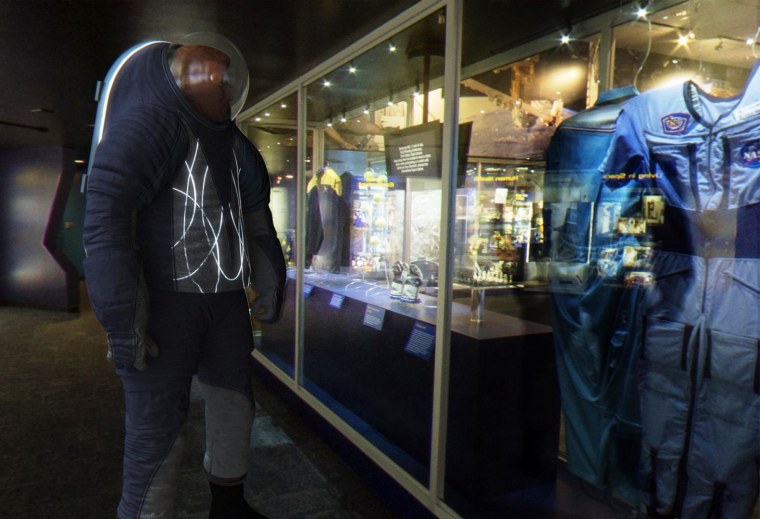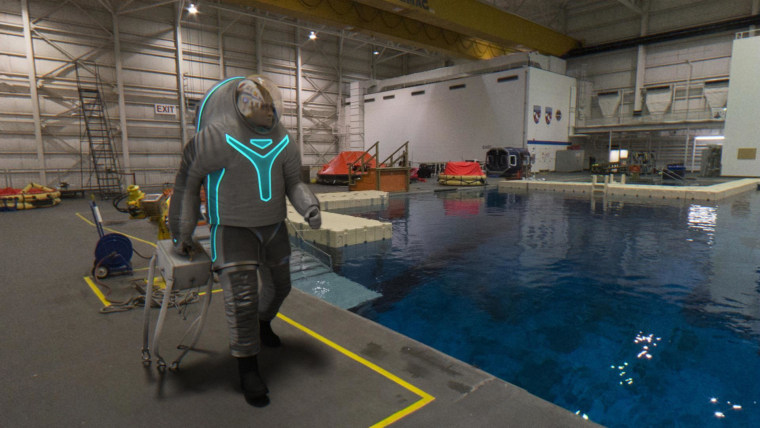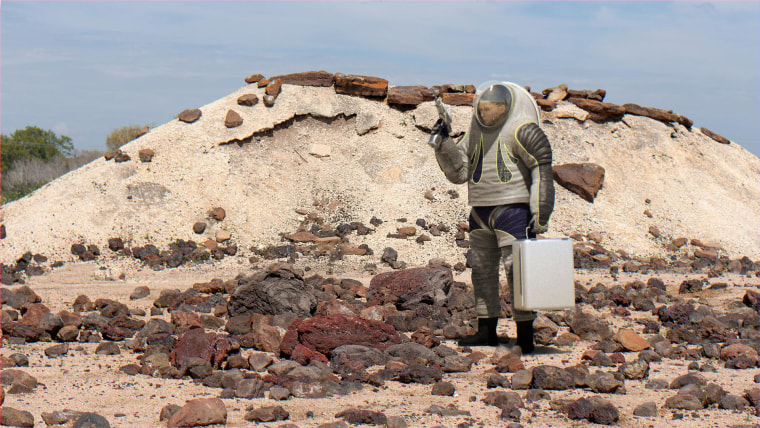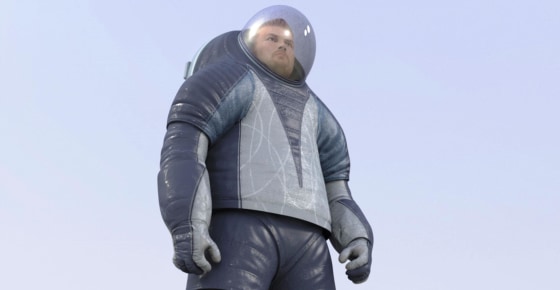Want to help design a spacesuit? NASA is taking one small step toward crowdsourced space exploration by letting Internet users select the cover layer for its next prototype suit.
NASA engineers drew up the choices in collaboration with spacesuit manufacturer ILC Dover and student designers from Philadelphia University. You can vote for the "Biomimicry" pattern, inspired by the look of bioluminescent sea creatures; the "Technology" pattern, with glowing panels that seem to pay homage to the classic video-game movie "Tron"; or "Trends in Society," which mimics swoopy sportswear patterns.
Each of the suits can fit over the Z-2 prototype spacesuit that ILC Dover is developing as a follow-up to its Buzz Lightyear-like Z-1 suit. All three designs incorporate electroluminescent wires and patches that will help engineers track the wearer's movements while the suit is being tested.
"We haven't had to design a spacesuit to operate in a surface environment since we went to the moon," said Daniel Huot, a NASA spokesman at Johnson Space Center in Texas. "As you can imagine, a lot of things have changed, and this is going to incorporate the features that astronauts are going to be wearing when we go to Mars."
The Z-2 boasts a hard composite upper torso with a suit port built in the back. That will make the suit more durable for use on Mars, and make it easier for astronauts to climb inside. The outer cover provides an extra layer of protection — and in this case, it also provides an opportunity for a fashion statement.



Balloting began Monday morning on the "Z-2 Spacesuit Design Vote" webpage, and Huot said more than 7,000 online votes were cast by the time he left the office for the day. NASA engineers will take questions about the design contest, the Z-2 and what it takes to build a spacesuit during a Reddit AMA scheduled to start at 2:30 p.m. ET Wednesday. The deadline for making your selection is April 15.
The winning design will be used on a Z-2 that should be ready by November. That suit will be put to the test at Johnson Space Center's simulated Mars rock yard as well as in vacuum chambers and the center's spacewalk training pool, also known as the Neutral Buoyancy Laboratory.
But you shouldn't count on seeing the winning design on Mars: The light-emitting features that make these prototypes look so fashionable here on Earth probably wouldn't work on a suit that will have to endure radiation exposure, micrometeoroids and temperature swings.
When astronauts touch down on Mars, they might be wearing a suit that incorporates some of the snazzy fashion accents seen in these designs — updated for the 2030s and beyond — or they might be wearing plain-vanilla spacesuits. Huot makes no promises, one way or the other.
"A Mars-ready suit will be designed solely for function, not form," he said.
Update for 12:30 p.m. ET March 25: Jinny Ferl, design engineering manager for space suit assemblies at ILC Dover, says future spacesuits may well include wearable electronics. But they won't include fashionable patches of dark material — those would absorb too much heat, making things uncomfortable for the astronaut inside. Ferl laid out the plan for the Z-2 suit in an email:
"We have finished a final design review with NASA on the Z-2 spacesuit and are proceeding to fabrication. ILC testing will begin in October per our current schedule. Testing will take place in lab facilities to verify the suit meets requirements. After delivery, NASA will then test the suit manned, in the 11-foot vacuum chamber at JSC. Following vacuum chamber testing, NASA will use the suit in the NBL [Neutral Buoyancy Lab]."We will fabricate the winning cover design for testing, although possibly not in the NBL, depending on the design/materials tolerance for chlorinated water. ... Some of the new design technologies could carry over to Z-3 or other advanced suits. However, depending on the ultimate environment, a flight suit cover would need to be multilayer and a reflective color, unlike the Z-2."
Ferl says the electroluminescent lighting just might be on the right track. "It's not inconceivable that we would use a powered system either for lighting or information," she said during a follow-up phone call. The wearable display could serve as a touchscreen control panel for a robotic field assistant, or the 21st-century equivalent of the wrist checklists that Apollo astronauts wore when they walked on the moon.
There's one thing those Apollo-era checklists had that the wristscreens for Mars missions will almost certainly lack: Playmates.
